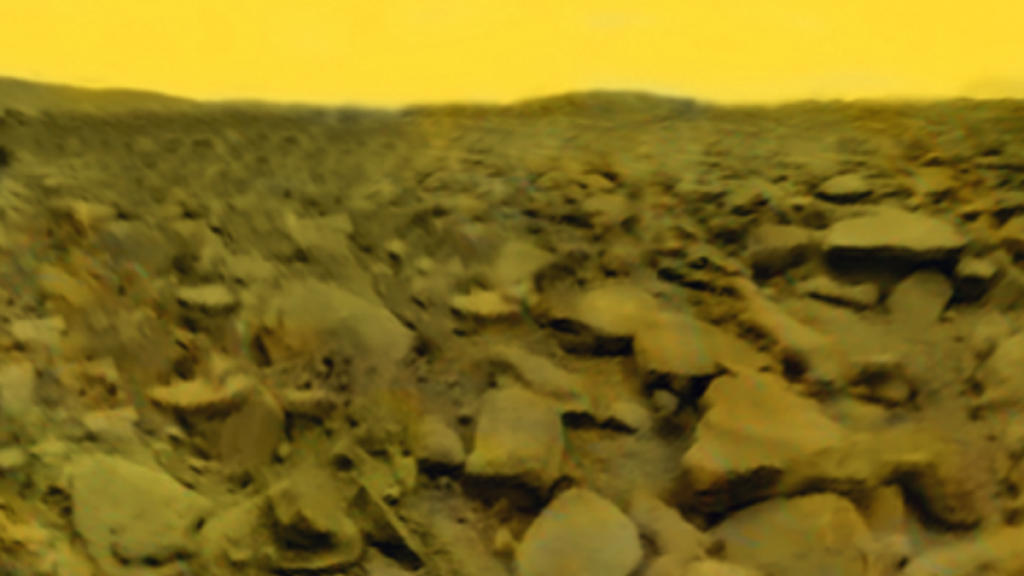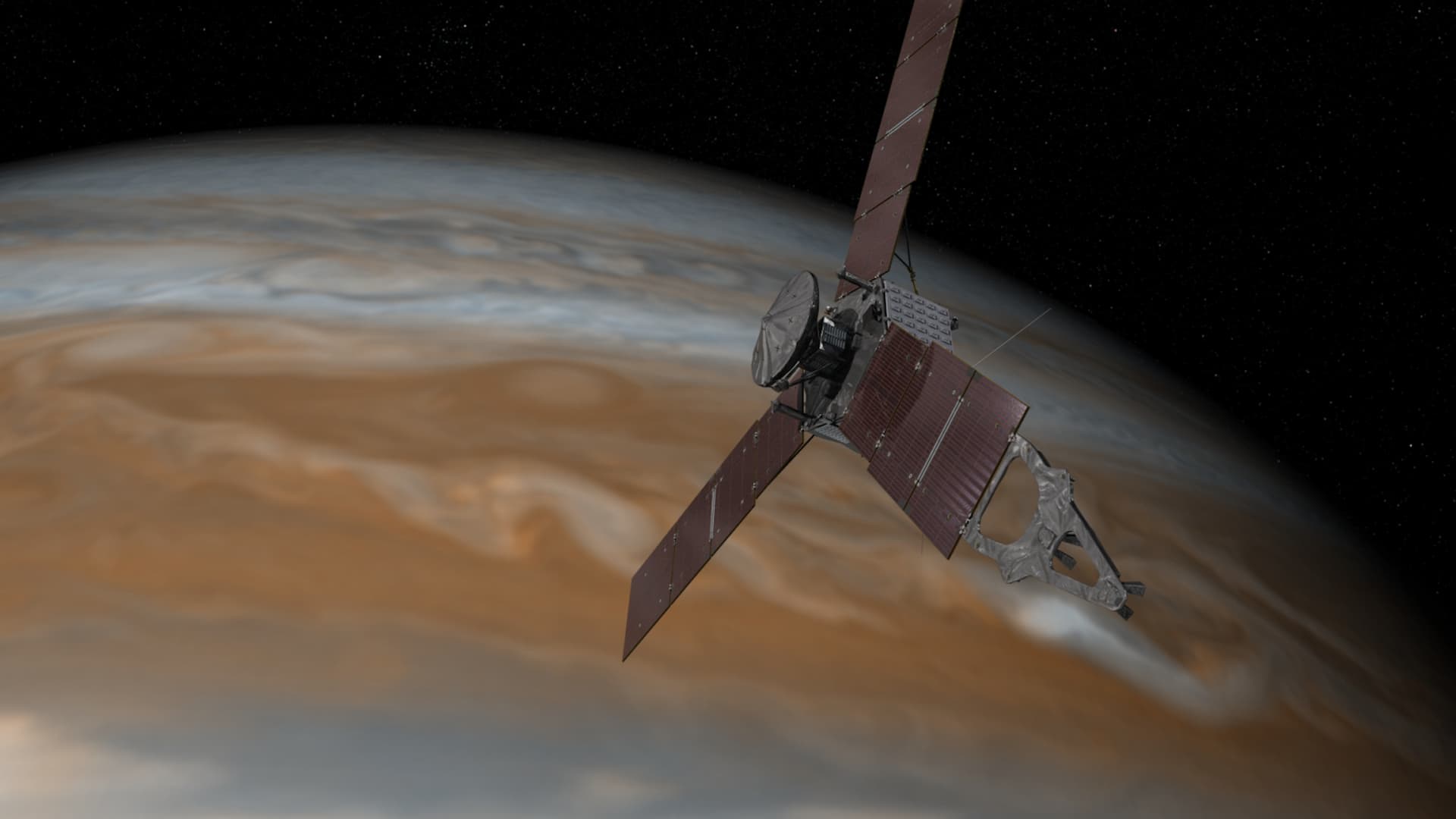A group of researchers led by the National Institute of Astrophysics (INAF) used the high spatial resolution infrared measurements of Italy’s Jovian InfraRed Auroral Mapper (JIRAM) instrument aboard NASA’s Juno probe to study the surface composition of Ganymede, the largest planet in the solar system. The moons of the Jupiter system and the largest natural satellite in the solar system. With this study, published today in the journal Nature Astronomy, researchers are trying to prove that Ganymede in the past could have had an ocean in direct contact with the mantle, and thus could have been habitable. The JIRAM instrument, funded and supported by the Italian Space Agency (ASI), was created by Finmeccanica, now known as Leonardo, and is scientifically directed by INAF in Rome.
Specifically, traces of chloride salts and possible carbonate salts, including ammonia variants, as well as organic compounds such as aliphatic aldehydes have been found in Ganymede. what does that mean? “The possible presence of ammonia salts suggests that Ganymede, during its formation, accumulated material cold enough to condense ammonia,” explains Federico Tosi, first author of the article and a researcher at INAF in Rome. Likewise, the presence of carbonate salts would be due to the original accumulation of carbon dioxide-rich ice. As on Earth and other planetary bodies such as Enceladus, Europa and Ceres, the presence of sodium in specific locations indicates the interaction between liquid water and rocky materials. This reaction, the INAF researcher continues, may have occurred early in Ganymede’s history, when mixtures of ice and rocks saw melting ice, water and other primordial volatiles separated from the rocks. “Aldehydes, which play an important role as prebiotic precursor molecules, may have been present in an ancient hydrothermal environment.”
The infrared data collected by the JIRAM instrument has the best spatial resolution ever achieved, less than one kilometer per pixel. “This type of analysis would not have been possible with previous remotely sensed infrared data from the Galileo space mission, the Hubble Space Telescope, and the Very Large Telescope, due to limitations in spatial and/or spectral resolution or spectral range,” Tosi says. JIRAM covered a narrow range of latitudes (10°N to 30°N) and a wider range of longitudes (-35°E to +40°E) in the Jupiter-facing hemisphere, flying over a variety of geological units as light. Soil wrinkled by faults, dark soil and ejecta from impact craters.
Tusi emphasizes that “the composition observed by JIRAM can vary depending on the soil type: a greater abundance of salts and organic matter is not necessarily found only in dark soils but also in some lighter soils consistent with faults, albeit with compositional differences between different faults.” , suggesting that an internal process such as the extrusion of fluid from below the surface may determine the observed composition. Not all dark soils appear equally rich in carbon dioxide, also indicating a distribution controlled by geological processes.
The mineral salts and organic compounds identified by the spectroscopic technique exploited by JIRAM on Ganymede, and their relationship to the geological features of the explored area, indicate that this is a fossil of the extensive exchange between liquid water and the rocky mantle that occurred up to a certain time. Point in satellite history.
The surface composition of icy moons Europa and Ganymede may limit the habitability of these moons, which are known to host interior oceans of liquid water. “In the recent past of these moons, the underground liquid may have occasionally come to the surface, leaving traces of its chemical composition,” Tosi adds. However, the combination of internal processes, i.e., attributable to the true composition of subterranean fluid, and extrinsic processes, which are instead due to spatial variation, complicates the study of surface formation: given that Ganymede has a much thicker ice crust than Europa, the formation The superficially observed today does not necessarily represent the internal and deeper formation.”
On June 7, 2021, the Juno probe flew over Ganymede from a distance of at least 1,046 km. Shortly after closest approach, the Italian JIRAM instrument captured images and infrared spectra of the satellite’s surface. “These data have reached an unprecedented spatial resolution of better than one kilometer per pixel, allowing surface composition to be revealed at a local scale,” Tosi comments enthusiastically.
This data arrives about ten years earlier than the measurements researchers expect from the European Space Agency’s JUICE probe that launched on April 14.
“The study demonstrates the complexity of the chemistry that occurs on the surface of Ganymede,” says Christina Plinacki, ASI’s JIRAM project scientist. “The results open important interpretive perspectives regarding the interactions between the surfaces of these objects with their interiors and the spatial environment. This work once again demonstrates the great scientific value of infrared spectroscopy, especially when run at high spatial resolution. The JIRAM results anticipate the large-scale measures that will be implemented Using the MAJIS tool of the JUICE mission to which Italy made a key contribution.”
for more information:
JIRAM is an imaging spectrometer on board the NASA-designed Juno spacecraft. The instrument, funded and supported by the Italian Space Agency, was created by Finmeccanica, now known as Leonardo, and is scientifically directed by INAF in Rome. There are three spectrographs created to study Jupiter and its moons: NIMS (Near Infrared Mapping Spectrometer) that flew aboard NASA’s Galileo mission, JIRAM aboard NASA’s Jupiter mission, and MAJIS (Moons and Jupiter Imaging Spectrograph) aboard ESA’s JUICE probe. JIRAM is primarily designed to examine Jupiter’s auroral and thermal emissions in the outer layer of the atmosphere.
JIRAM consists of an optical head and an electronic box. The optical system is equipped with a single telescope and hosts an infrared camera and a spectrometer capable of ensuring flexibility of observation. In particular, the slit spectrometer, used in the case of the Ganymede study, operates in the 2-5 μm range sampled in 336 spectral channels and has a 3.5° field of view sampled in 256 spatial pixels.
Read the article “Salts and organics on the surface of Ganymede from infrared observations by Juno/Jerram“, written by Federico Tosi, Alessandro Mora, Alessandra Cofano, Francesca Zambon, Christopher R. Glenn, Mauro Ciarniello, Jonathan I. Lunin, Giuseppe Piccione, Cristina Bellacci, Roberto Sordini, Alberto Adriani, Scott J. Bolton, Candice J. Hansen, Tom A. Nordheim, Alexander
Image source: NASA/JPL-Caltech

“Internet trailblazer. Travelaholic. Passionate social media evangelist. Tv advocate.”







More Stories
Listen to the haunting sound of space thunder recorded on Venus in 1982
Watch a real video of the comet's surface
Moon and Earth photographed from 1.5 million kilometers away: Watch NASA's stunning video